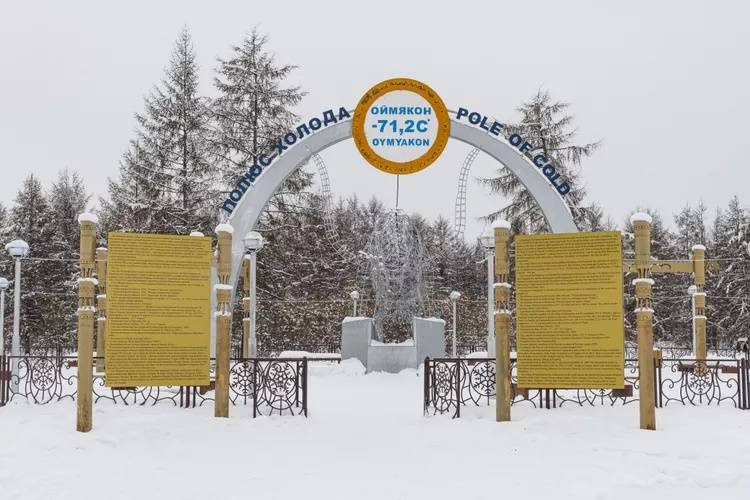
30 Wild Facts About the Boreal Forest
Oymyakon, coldest permanent inhabited settlement on Earth, Road of Bones, Sakha Republic (Yakutia), Russia. Michael Runkel/robertharding / Getty Images
The boreal is cold. The lowest recorded temperatures in the Northern Hemisphere were recorded in the boreal (or taiga) of northeastern Russia. The town of Oimyakon has reached temperatures as low as nearly -70°C in the northern areas during winter.9
There is little rainfall in the boreal biome. Precipitation comes mostly in the form of snow, with a little rain during the summer months.
The zone of latitude occupied by the boreal forest has seen some of the most dramatic temperature increases, especially in winter and especially during the last quarter of the 20th century.10
The warming trend threatens to transform the boreal forest area into grassland, parkland, or temperate forest, introducing a significant shift in species of both plants and animals.
Outbreaks of forest-destroying plagues have come in the form of spruce-bark beetles, aspen-leaf miners, larch sawflies, spruce budworms, and spruce cone worms11—all of which have been worsening in recent years due in large part to the warming of the average temperature.
The boreal forest stores enormous quantities of carbon, possibly more than the temperate and tropical forests combined, much of it in peatland.12
The Canadian boreal emerged with the end of the last Ice Age about 12,000 years ago, with coniferous tree species migrating north.13 The forest as we know it today in terms of biodiversity took shape only a few thousand years ago—a very short time ago in geological time scale.
Wildfires are an important part of the reproductive cycle for some species.14
The trees of the boreal forest tend to have shallow roots due to the thin soils.15
The soils of the boreal forest are often acidic due to falling pine needles and low on nutrients since the cold temperatures do not allow much foliage to rot and turn into dirt.16
To date, only 12% of the boreal forest is protected around the globe—and over 30% has been designated for logging, energy, and other development.1718
The boreal is cold. The lowest recorded temperatures in the Northern Hemisphere were recorded in the boreal (or taiga) of northeastern Russia. The town of Oimyakon has reached temperatures as low as nearly -70°C in the northern areas during winter.9
There is little rainfall in the boreal biome. Precipitation comes mostly in the form of snow, with a little rain during the summer months.
The zone of latitude occupied by the boreal forest has seen some of the most dramatic temperature increases, especially in winter and especially during the last quarter of the 20th century.10
The warming trend threatens to transform the boreal forest area into grassland, parkland, or temperate forest, introducing a significant shift in species of both plants and animals.
Outbreaks of forest-destroying plagues have come in the form of spruce-bark beetles, aspen-leaf miners, larch sawflies, spruce budworms, and spruce cone worms11—all of which have been worsening in recent years due in large part to the warming of the average temperature.
The boreal forest stores enormous quantities of carbon, possibly more than the temperate and tropical forests combined, much of it in peatland.12
The Canadian boreal emerged with the end of the last Ice Age about 12,000 years ago, with coniferous tree species migrating north.13 The forest as we know it today in terms of biodiversity took shape only a few thousand years ago—a very short time ago in geological time scale.
Wildfires are an important part of the reproductive cycle for some species.14
The trees of the boreal forest tend to have shallow roots due to the thin soils.15
The soils of the boreal forest are often acidic due to falling pine needles and low on nutrients since the cold temperatures do not allow much foliage to rot and turn into dirt.16
To date, only 12% of the boreal forest is protected around the globe—and over 30% has been designated for logging, energy, and other development.1718
Advertisements
05 March 2024
Advertisements



